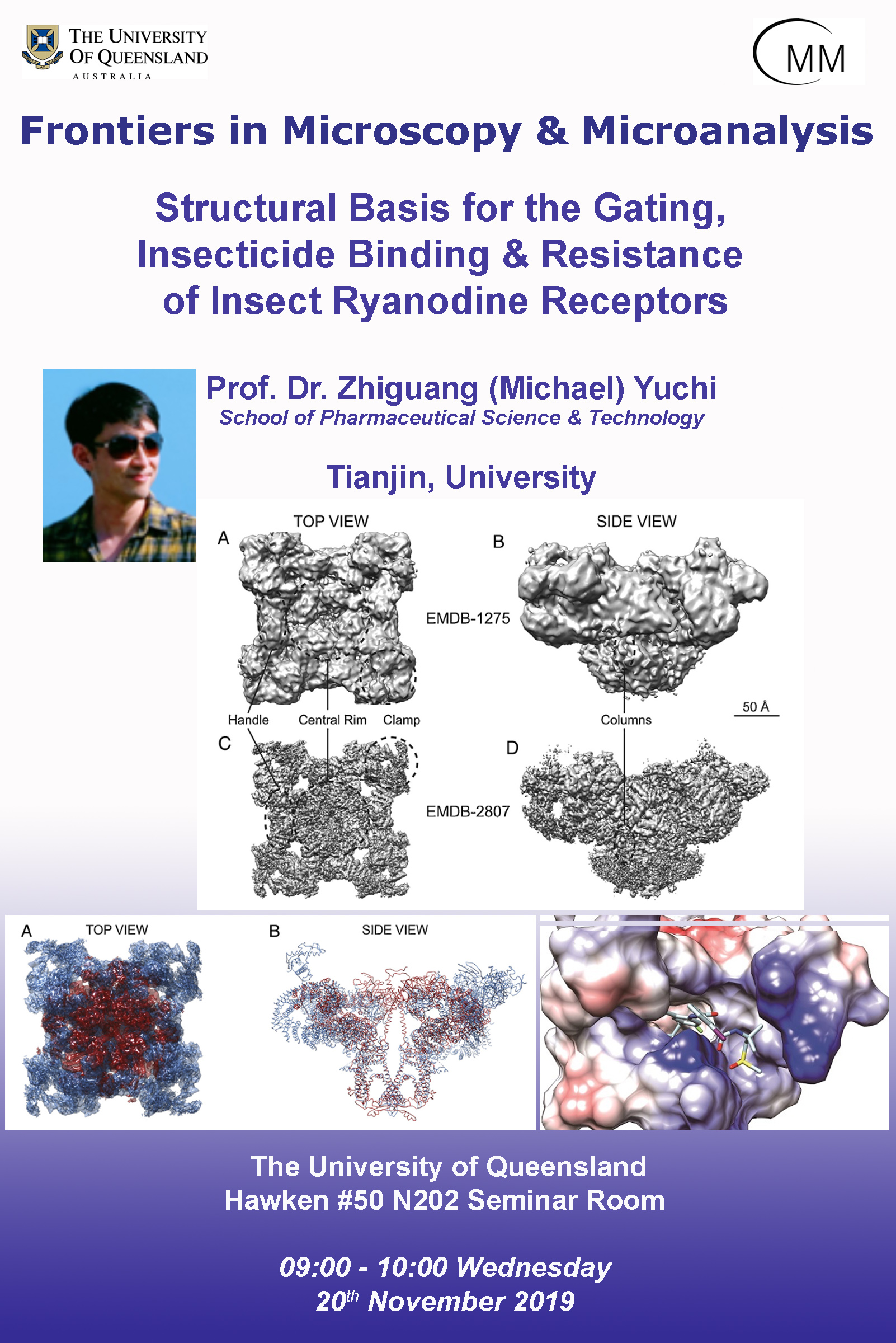We would like to invite you to the next Frontiers in Microscopy & Microanalysis talk next Wednesday starting at 9am (see flyer attached).
Title: Structural Basis for the Gating, Insecticide Binding & Resistance of Insect Ryanodine Receptors
Presenter: Professor Zhiguang (Michael) Yuchi, School of Pharmaceutical Science & Technology, Tianjin University
Date/time: Wednesday 20th November, 9am to 10am
Venue: Hawken Building # 50, Seminar Room - N202
Biosketch:
Michael Yuchi is currently a principle investigator in School of Pharmaceutical Science and Technology at Tianjin University. Michael received his B.Sc. degree (2003) from Fudan University and Ph.D. degree (2009) from McMaster University. Prior to joining Tianjin University in 2016, he was a postdoctoral fellow at Cold Spring Harbor Laboratory and later a research associate at University of British Columbia. The research in Prof. Yuchi’s group focuses on the structural and functional studies of ion channels. Particularly, he has been working on several important insecticide target proteins. His work has been published in Nature Communications, Molecular Cell, BMC Biology, Cell Research, Structure, etc. His research had been supported by Michael Smith postdoctoral fellowship and now by Thousand Talents Plan in Tianjin. Michael is also a joint professor in Fujian Agricultural and Forestry University.
Abstract:
Diamide insecticides target insect ryanodine receptors (RyRs) and cause misregulation of calcium signaling in insect muscles and neurons, generating worldwide sales over 2 billion U.S. dollars annually. Several resistance mutations have been reported to reduce the efficacy of the diamides, but the exact binding sites and mechanism of resistance mutations are not clear. The recent breakthrough in the structural studies of mammalian RyRs has deepened our understanding of the channel, but the structural information about insect RyRs is still scarce. Recently we have solved the crystal structures of several RyR domains from the diamondback moth and the bee, revealing insect-specific structural features which could be potentially targeted by novel insecticides. Interestingly, we found that the phosphorylation of insect RyR is temperature-dependent, facilitated by the low thermal stability and dynamic structure of the insect RyR. We also solved the cryo-electron microscopy (cryo-EM) structure of RyR in complex with the anthranilic diamide chlorantraniliprole. Chlorantraniliprole binds to the pseudo-voltage-sensor domain (pVSD) of RyR, a site in proximity to the previously identified resistance mutations. Mutagenesis studies in silico, in mutant cell lines, and in transgenic drosophila strains reveal the key residues involved in diamide coordination and the molecular mechanism under species-selectivity and resistance mutations. Our structure provides a foundation for developing novel pesticides to overcome the resistance crisis.
All are welcome!




